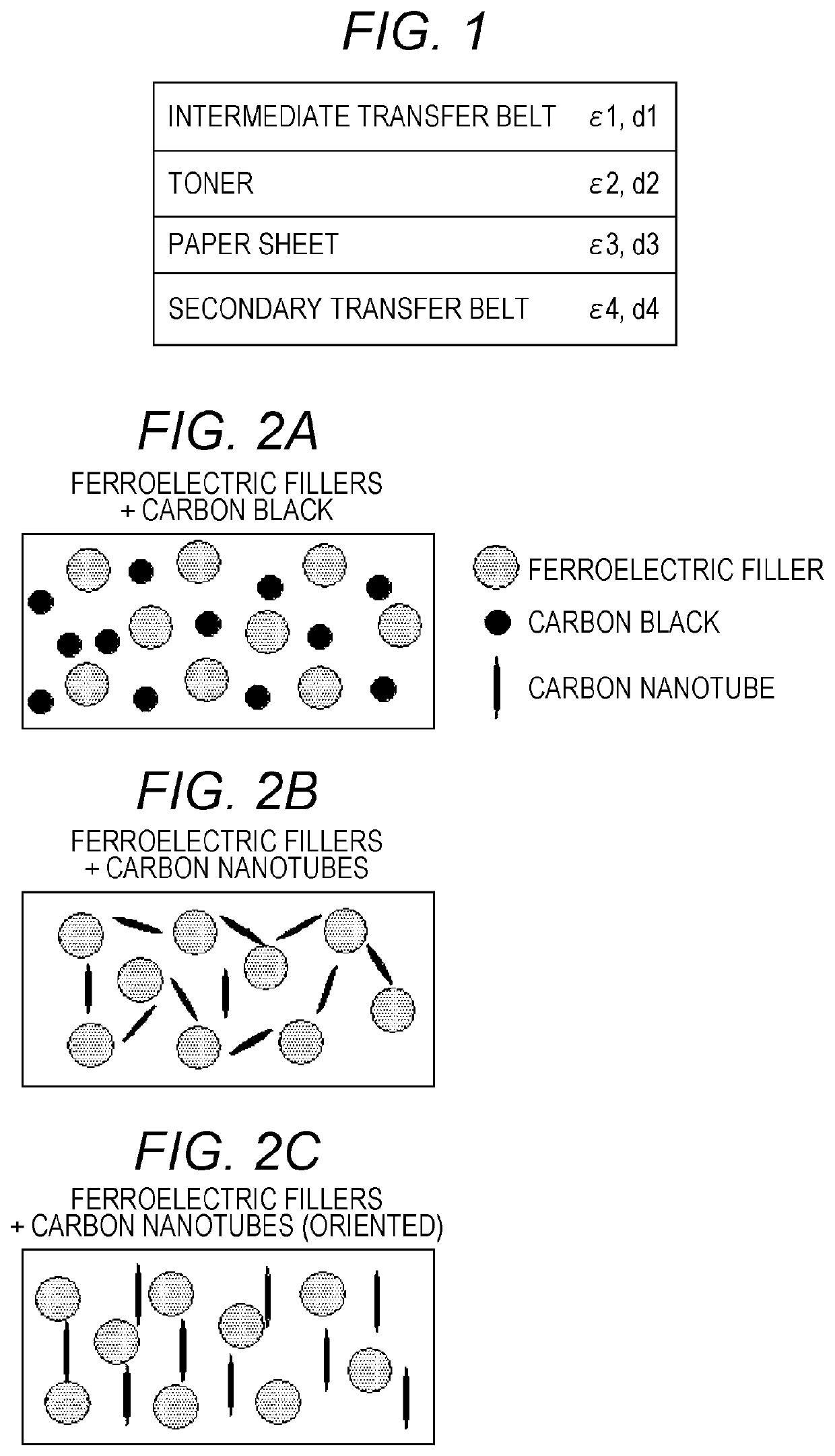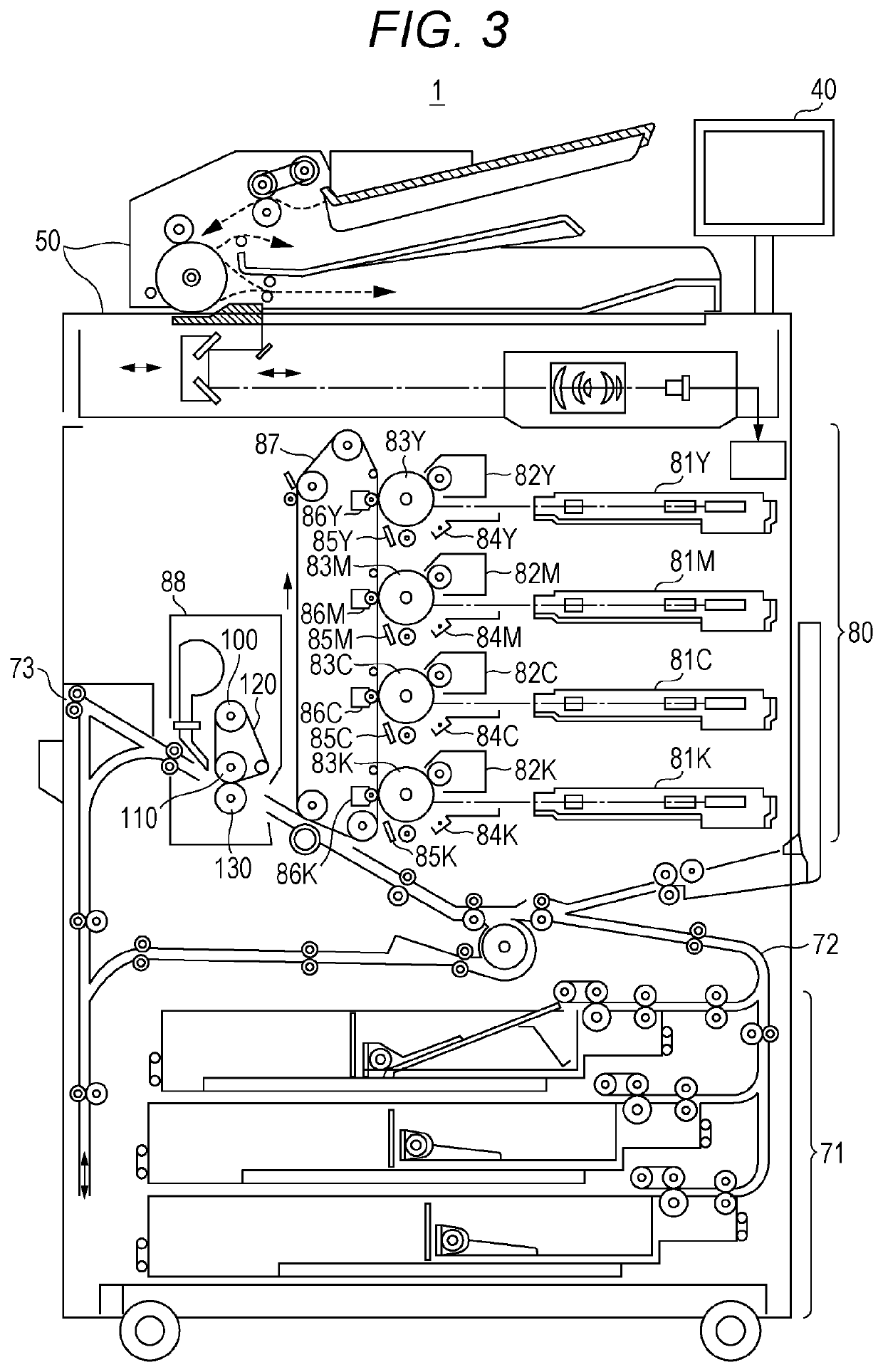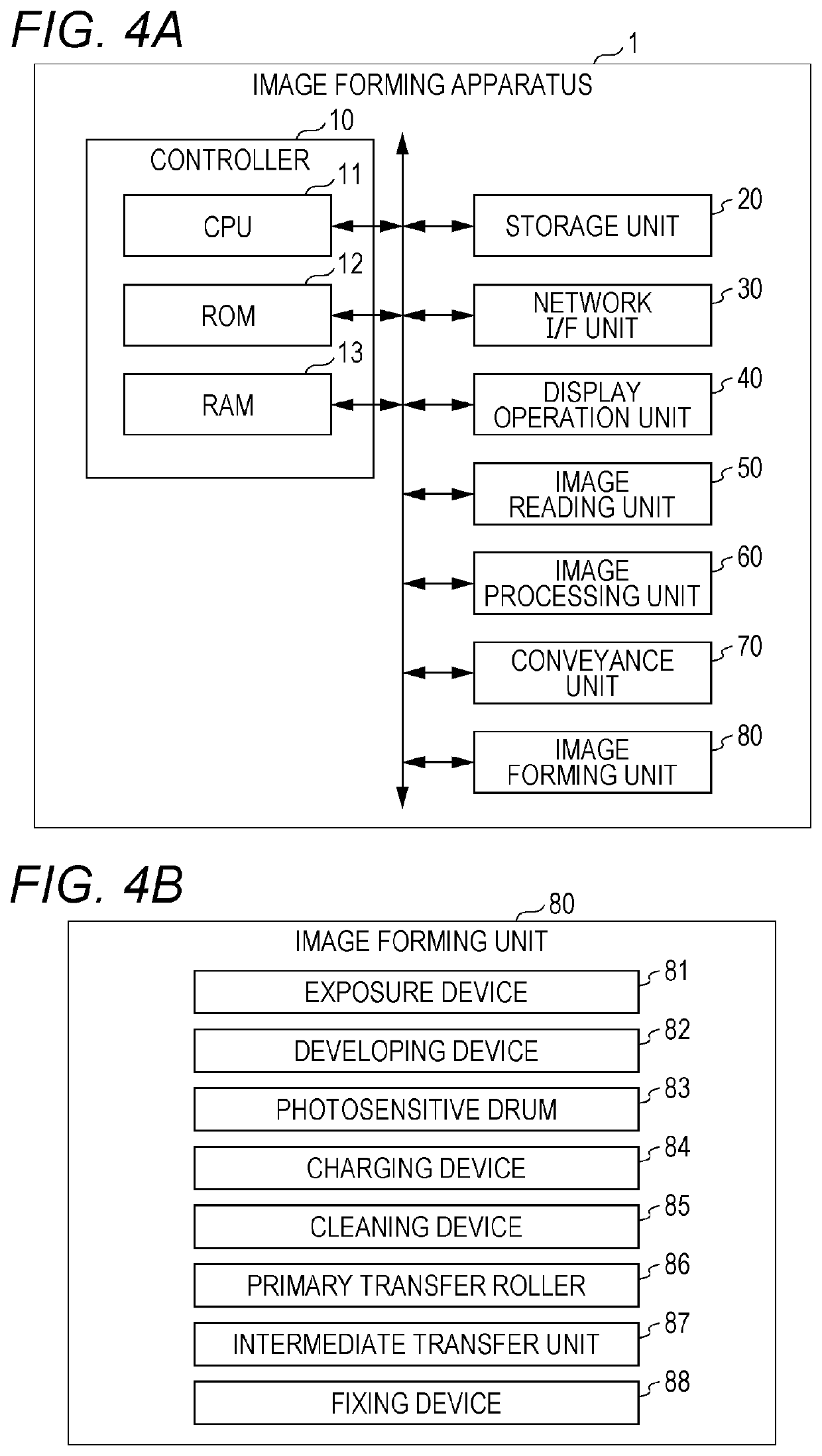Intermediate transfer member and image forming apparatus
- Summary
- Abstract
- Description
- Claims
- Application Information
AI Technical Summary
Benefits of technology
Problems solved by technology
Method used
Image
Examples
examples
[0054]To check the effects of an intermediate transfer belt according to the above described embodiment of the present invention, intermediate transfer belts in which the rate of content of CNTs and the rate of content of ferroelectric fillers were varied were prepared by the manufacturing method described in the embodiment (Examples 1 to 7). For comparison, intermediate transfer belts containing different conductive filler materials and ferroelectric filler materials were also prepared (Comparative Examples 1 to 4).
[0055]Specifically, in Examples 1 to 4, 6, and 7, CNTs were used as the conductive fillers, barium titanate was used as the ferroelectric fillers, and the rate of content of the ferroelectric fillers, the total rate of content of the CNTs and the ferroelectric fillers, the diameter of the CNTs, the length of the CNTs, and the film thickness were varied in the preparation of intermediate transfer belts. In the preparation of an intermediate transfer belt in Example 5, str...
PUM
 Login to View More
Login to View More Abstract
Description
Claims
Application Information
 Login to View More
Login to View More - R&D
- Intellectual Property
- Life Sciences
- Materials
- Tech Scout
- Unparalleled Data Quality
- Higher Quality Content
- 60% Fewer Hallucinations
Browse by: Latest US Patents, China's latest patents, Technical Efficacy Thesaurus, Application Domain, Technology Topic, Popular Technical Reports.
© 2025 PatSnap. All rights reserved.Legal|Privacy policy|Modern Slavery Act Transparency Statement|Sitemap|About US| Contact US: help@patsnap.com



